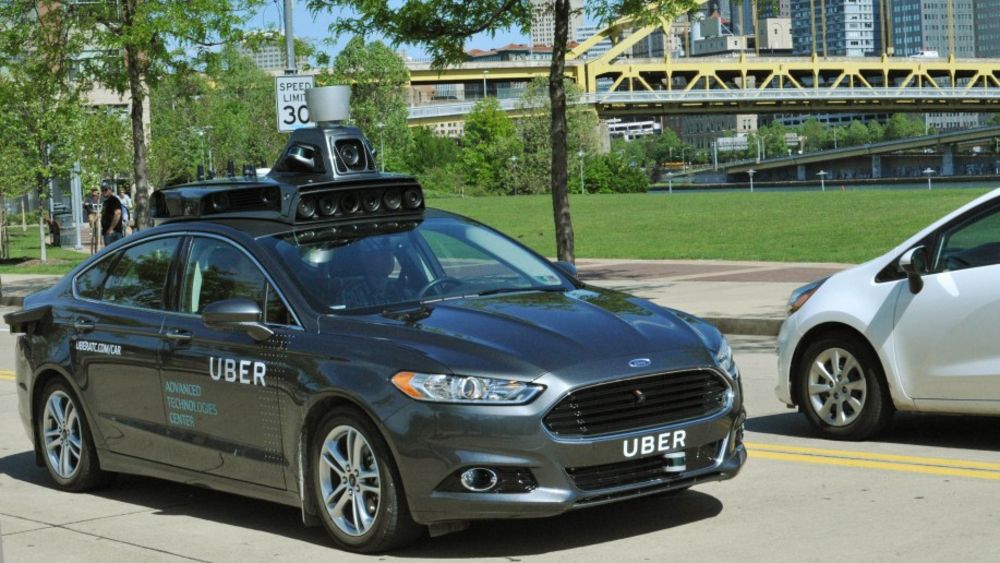
Robohub.org
Uber’s fatal crash

Credit: Uber
By Bryant Walker Smith
An automated vehicle in Uber’s fleet fatally struck a woman crossing a street in Arizona. A few points pending more information:
- This sad incident will test whether Uber is becoming a trustworthy company. Uber needs to be unflinchingly candid and unfailingly helpful in the multiple investigations that are likely to result. It shouldn’t even touch its onboard and offboard systems unless credible observers are present. In this crash, a multitude of data will likely be available to help understand what happened—but only if those data can be believed.
- The circumstances of this crash certainly suggest that something went wrong. Was the vehicle traveling at a speed appropriate for the conditions? Did the automated driving system and the safety driver recognize the victim, predict her path, and respond appropriately? The lawfulness of the victim’s actions is only marginally relevant to the technical performance of Uber’s testing system (which includes both vehicle and driver).
- Regardless of whether this crash was unavoidable, serious developers and regulators of automated driving systems understand that tragedies will occur. Automated driving is a challenging work in progress that may never be perfected, and I would be skeptical of anyone who claims that automated driving is a panacea—or who expresses shock that it is not.
- However, this incident was uncomfortably soon in the history of automated driving. In the United States, there’s about one fatality for every 100 million vehicle miles traveled, and automated vehicles are nowhere close to reaching this many real-world miles. This arguably first fatality may not tell us much statistically, but neither is it reassuring.
- On the same day that this tragic crash happened, about 100 other people died in crashes in the United States alone. Although they won’t make international news, their deaths are also tragedies. And most of them will have died because of human recklessness, including speeding, drinking, aggression, and distraction. This is a public health crisis, and automated driving may play an important role (though by no means the only role) in addressing it. In short: We should remain concerned about automated driving but terrified about conventional driving.
- Technologies are understood through stories—both good and bad. I don’t know how this tragic story will play out in the fickle public. Surprisingly, Tesla’s fatal 2016 crash doesn’t seem to have dramatically shifted attitudes toward driving technologies. But that was Tesla, and this is Uber. And whereas few people use Autopilot, almost everyone is a pedestrian.
- The current tragedy includes a long prologue that does not look good. In 2016, Uber refused to comply with California’s automated vehicle law, the state revoked the company’s vehicle registrations, Arizona’s governor tweeted “This is what OVER-regulation looks like! #ditchcalifornia,” and Uber trucked its vehicles down to his state.
- Developers need to show that they are worthy of the tremendous trust that regulators and the public necessarily place in them. They need to explain what they’re doing, why they believe it is reasonably safe, and why we should believe them. They need to candidly acknowledge their challenges and failures, and they need to readily mitigate the harms caused by those failures. I expand on these principles in a paper (“The Trustworthy Company”) forthcoming at newlypossible.org.

CIS Blog
is produced by the Center for Internet and Society at Stanford Law School.

CIS Blog
is produced by the Center for Internet and Society at Stanford Law School.
Related posts :
Robot Talk Episode 131 – Empowering game-changing robotics research, with Edith-Clare Hall
Robot Talk
31 Oct 2025
In the latest episode of the Robot Talk podcast, Claire chatted to Edith-Clare Hall from the Advanced Research and Invention Agency about accelerating scientific and technological breakthroughs.
A flexible lens controlled by light-activated artificial muscles promises to let soft machines see
The Conversation
30 Oct 2025
Researchers have designed an adaptive lens made of soft, light-responsive, tissue-like materials.
Social media round-up from #IROS2025
Lucy Smith
27 Oct 2025
Take a look at what participants got up to at the IEEE/RSJ International Conference on Intelligent Robots and Systems.
Using generative AI to diversify virtual training grounds for robots
MIT News
24 Oct 2025
New tool from MIT CSAIL creates realistic virtual kitchens and living rooms where simulated robots can interact with models of real-world objects, scaling up training data for robot foundation models.
Robot Talk Episode 130 – Robots learning from humans, with Chad Jenkins
Robot Talk
24 Oct 2025
In the latest episode of the Robot Talk podcast, Claire chatted to Chad Jenkins from University of Michigan about how robots can learn from people and assist us in our daily lives.
Robot Talk at the Smart City Robotics Competition
Robot Talk
22 Oct 2025
In a special bonus episode of the podcast, Claire chatted to competitors, exhibitors, and attendees at the Smart City Robotics Competition in Milton Keynes.
Robot Talk Episode 129 – Automating museum experiments, with Yuen Ting Chan
Robot Talk
17 Oct 2025
In the latest episode of the Robot Talk podcast, Claire chatted to Yuen Ting Chan from Natural History Museum about using robots to automate molecular biology experiments.
What’s coming up at #IROS2025?
Lucy Smith
15 Oct 2025
Find out what the International Conference on Intelligent Robots and Systems has in store.


